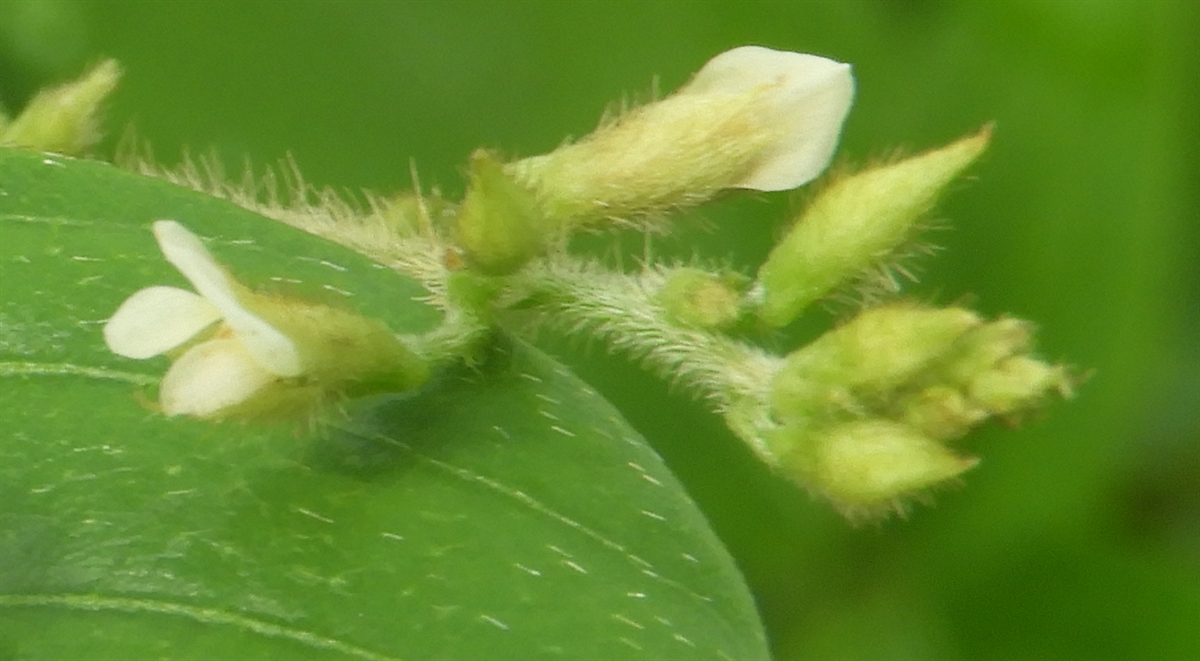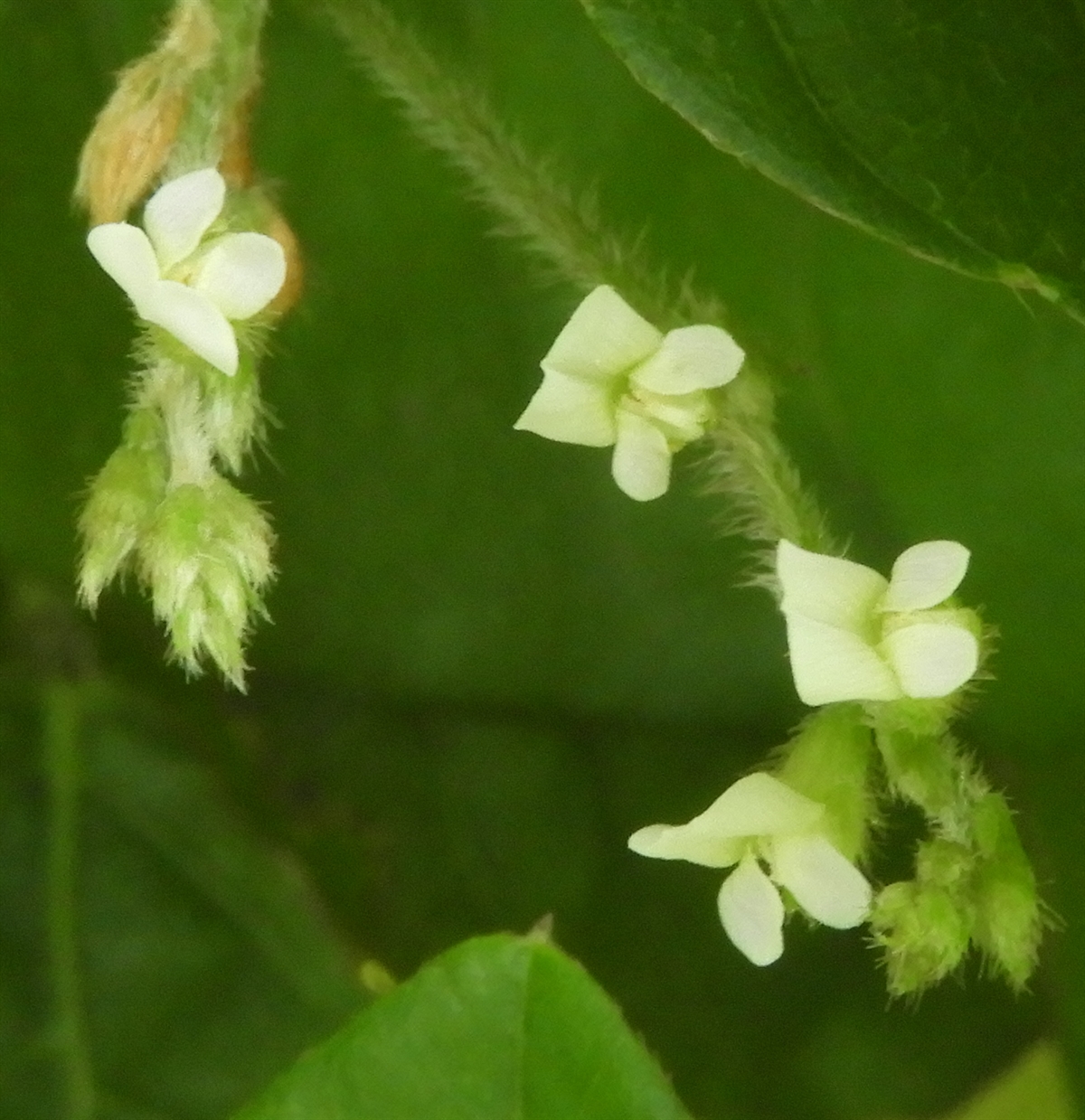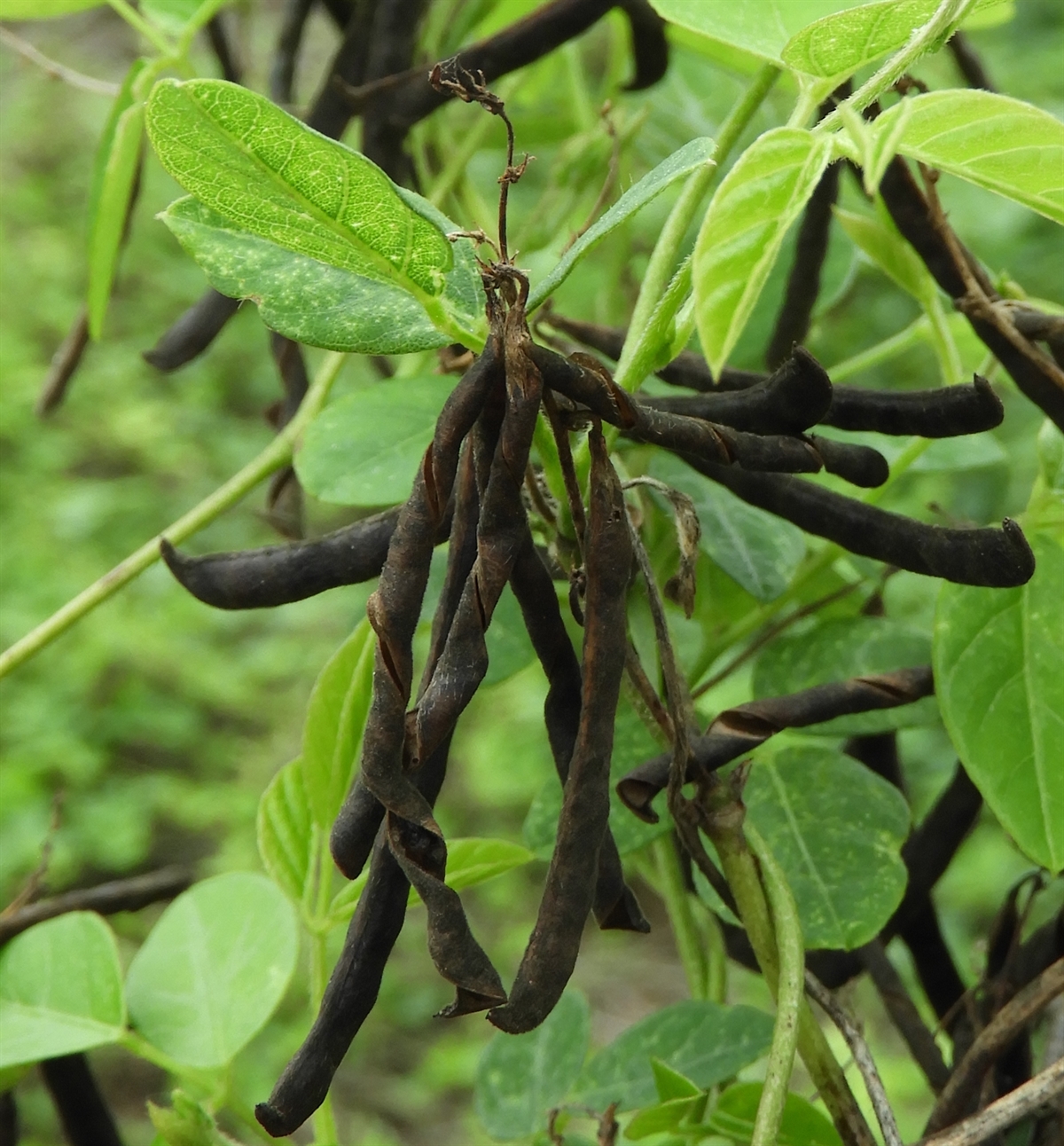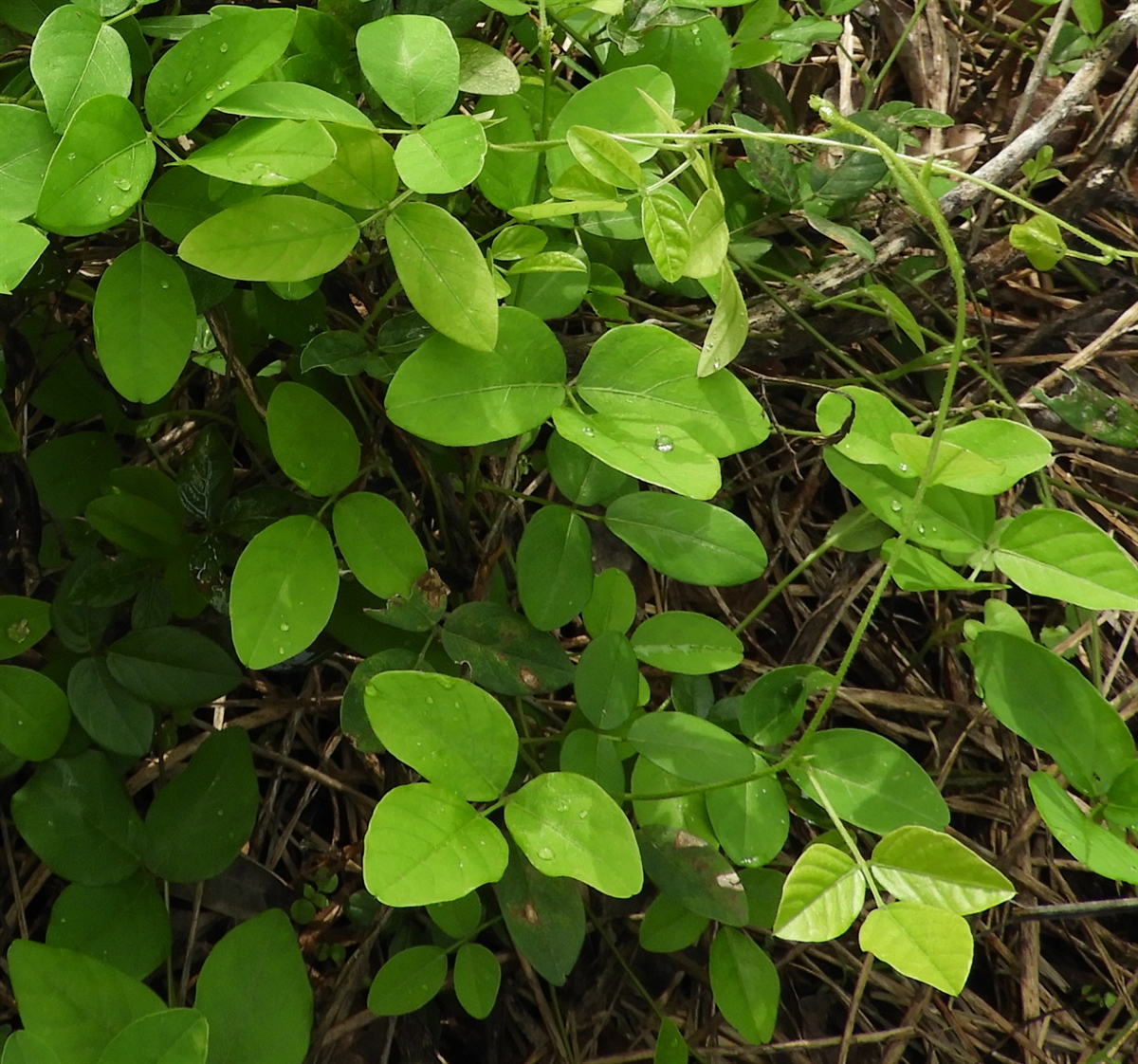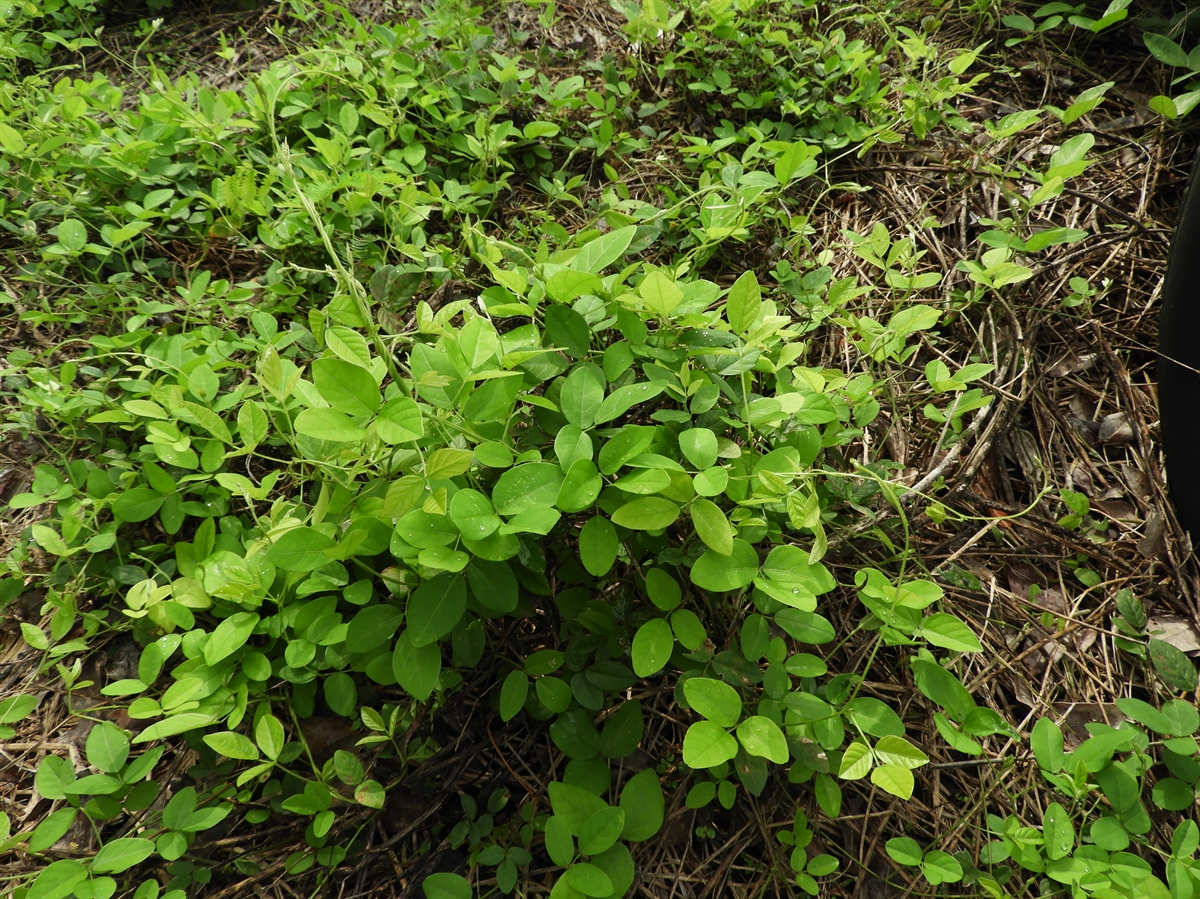Habit: Teramnus labialis grows as a perennial vine. The vegetation is slightly pubescent. The trifoliate leaves are arranged alternately with ovate/lanceolate stipules at the petiole base. The pubescent leaflets are round/ovate/elliptic, to 5 cm in length, with an emarginate or acuminate leaf apex and an entire margin.
The complete, perfect, zygomorphic flowers are arranged in few flowered, pubescent, terminal racemes. The calyx has 5, partially fused, pubescent, green sepals forming a tube with the sepal lobes the same length as the tube. The corolla has 5, pubescent, white, pink, or purple petals, the upper enlarged to form the banner and the lower 2 fused to form the keel. There are 5 stamens and 5 staminodes. The ovary is superior and has a single locule with numerous seeds. The fruit is a pubescent, legume up to 5 cm in length, with a 2 mm beak at the end, at maturity. The fruits coil to assist in releasing the seeds.
Habitat: Teramnus labialis grows in Human Altered environments (waste areas, abandoned fields, roadsides).
Distribution: Teramnus labialis is known to occur on Eleuthera and New Providence as well as the Caribbean region, Central America, Africa, the Indian subcontinent, and Asia but now grows in the South America and Australia.
Medicinal/Cultural/Economic usage: Teramnus labialis is not known to be used medicinally in the Lucayan Archipelago.
It is used in the Ayurvedic system of medicine and is used to treat rheumatism, tuberculosis, nerve disorders and paralysis.
